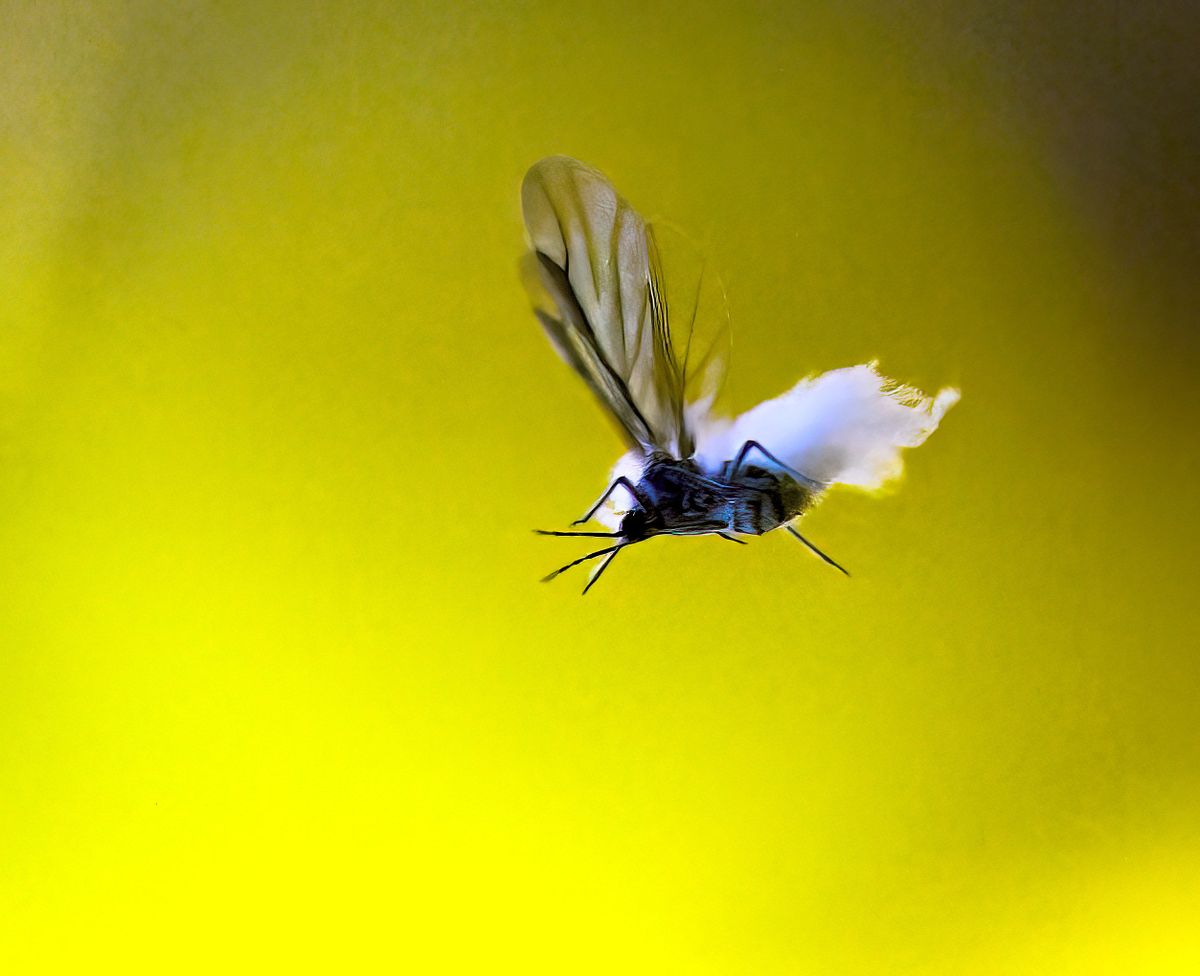Autumn’s prolonged warmth fuels swarms of flying aphids
Woolly aphids, also called smokey-winged ash aphids are taking full advantage of this warmer than usual October to get together. (COLIN MULVANY/THE SPOKESMAN-REVIEW)Buy a print of this photo
Dense swarms of tiny fluffy insects are flitting about parts of the Inland Northwest, sticking to windshields, alighting on people’s clothes and landing in wine glasses at outdoor gatherings.
“It’s an orgy out there,” said Carl Barrentine, a naturalist who lives in Spokane.
They’re smoky-winged ash aphids, said entomologist Richard Zack of Washington State University. Although the winged critters emerge like clockwork each October, they’re swarming in larger numbers this year due to the region’s unseasonably warm, dry weather, he explained.
“We’re seeing a lot of them,” he said, adding that how many smoky-winged ash aphids appear and for how long depends largely on weather conditions.
“We’ve had a lot of warm, sunny days this fall, which triggers the aphids to fly. At certain times of the day, they appear to be everywhere,” Zack said.
Freezing temperatures or an early snowstorm – such as the one that hit the Spokane area on Oct. 23, 2020 – can lead to a large kill-off. Last year, temperatures dropped below freezing on Oct. 11.
But this year is another story, with each day reaching 70 degrees or higher so far this October and no freezing overnight, according to the National Weather Service in Spokane.
Consequently, pulsating clouds of the white-tufted insects backlit by the sun are appearing as early as noon and becoming more active as the afternoons warm up, Zack said.
Also called woolly aphids, they produce a waxlike substance that gives them a woolly, ash-colored appearance. Their daily airshows are sparking interest on social media as residents express a mix of fascination and concern.
Rest assured, woolly aphids aren’t aiming to devour your trees, suck your blood or slip into your home to overwinter. Their swarms consist mostly of females migrating from the roots of Douglas fir trees to ash trees where they’ll lay their eggs, Zack said. “While some aphid species damage plants and trees, not this one,” he said.
Chances are, the aphids will be noticeable until Halloween. Temperatures are expected to drop this weekend, but probably not enough to dissipate the swarms much unless it rains. Faced with a flurry of pesky aphids, you may find yourself swatting the air to keep them away.
“It could be worse,” said Barrentine, who, as a naturalist and retired biology professor monitors their autumnal appearance with interest. “At least they’re not mosquitoes, ticks or black flies.”

